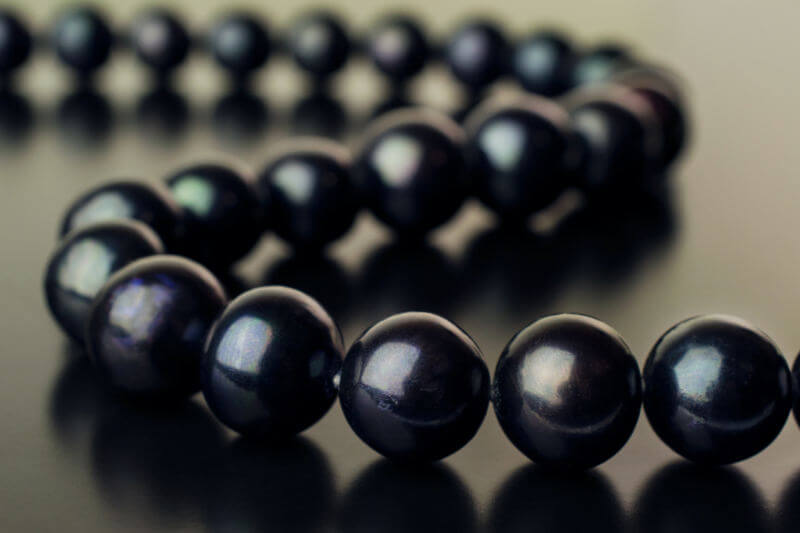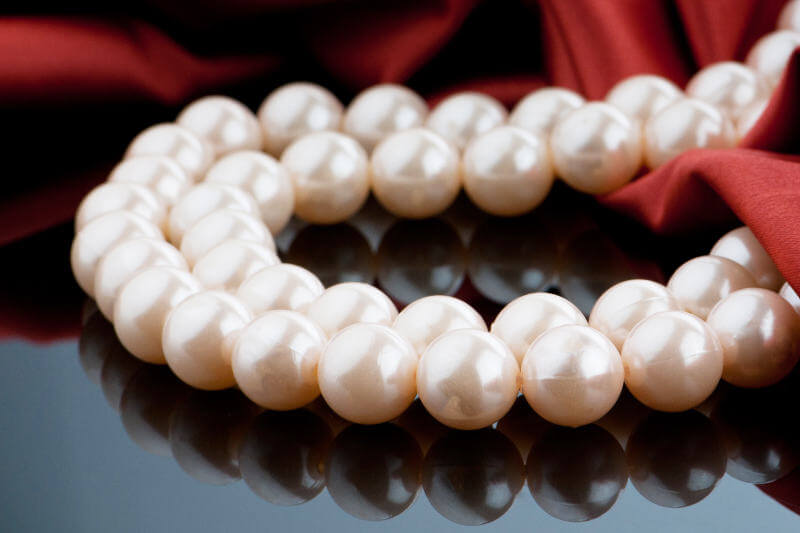June Birthstones
- Home /
- Birthstones by Month /
- June Birthstones
What are The Birthstones of June?
June is one of the few months considered to have several birthstones; Pearl, Alexandrite and Moonstone. The most traditional one is the only gem made by living creatures rather than the earth itself; the pearl. Originating from oceans, lakes and rivers, hidden between the shells of clams and mussels - pearls have always fascinated mankind and were associated with mythical creatures such as mermaids and angels. But whether magical or not, pearls have become one of the most popular gems in the world and symbolize timeless beauty and class.
Quick Facts on June's Birthstones
June Birthstone Facts
| Pearl | Alexandrite | |
|---|---|---|
| Birthstones of June | Pearl and Alexandrite | |
| Birthstone Color | White, cream, peach and black | Bluish green in daylight, purplish red in incandescent light |
| Mohs Scale | 2.5-3.0 | 8.5 |
| Origin | Freshwater pearls primarily from China. Saltwater pearls found mainly on the coast of Japan, French Polynesia, and Australia; | Sri Lanka, East Africa, and Brazil |
The Story of Pearls
 Black Pearl Necklace
Black Pearl Necklace
 White Pearl Necklace
White Pearl Necklace
Pearls have been around and popular for over a millenia (possibly longer), and have captivated Ancient cultures worldwide. Dubbed “The Queen of Gems”, unlike sapphires or emeralds, they are not a mineral but are rather formed in an unique way; once a grain of sand or a different intruder penetrates the mollusk, to protects itself and seals the intrusion in a “pearl sac”. The mollusk secretes calcium, adding more and more layers to that intruding pest. Finally, forming the glossy white pearl.
The first record of pearls in history was in China in the year 2206 BCE, and the gem was considered to be an offering for the royal family. Though cherished and prized, it was black pearls that they truly coveted. The black form of the gem was representative of wisdom and according to ancient belief, was formed in the heads of dragons. But aside from myths, the pearl was also associated with royalty and considered a status symbol in ancient Rome, in ancient India and even Egypt (rumor has it that Cleopatra herself crushed them into her wine glass, to prove that she could have the most expensive meal).
Despite their fame in the ancient world, it wasn’t until the 17th century that they were discovered in South and Central America and were then brought to Europe. There, they became the ultimate symbol of nobility and wealth, and were available only for upper classes. As demand grew, the gems became increasingly rarer, perpetuating the image of pearls as that of pure class, exceptional strength and the embodiment of femininity.
Myths and Legends Surrounding Pearls
There are countless stories and myths surrounding pearls, regarded as one of the ocean’s greatest mysteries. Yet, one of the most fascinating legends about pearls, one which had persisted for many centuries, was that of the ancient Greeks. They believed that pearls were tears of the gods. Aphrodite, the goddess of love and beauty and one of Zues’ many love children, was believed to emerge from the ocean wearing a string of pearls - providing her divine beauty and magic.
It was then, centuries later, that the Persians associated the gem with fickle beauty and therefore, the skies and seas. As a result, it was believed that pearls are formed in a moment of perfection, when the water hits the light and a rainbow appears. The thunder which strikes during the storm, was thought to be reflected in the shiney veneer of the white gem.
The Story of Alexandrites
The Ying to the Pearl’s Yang is the Alexandrite; while the white gem has one of the longest and richest histories, the Alexandrite is a relatively young stone, history wise. Legend (or rather a debatable version of history) has it that the Alexandrite was discovered in the 19th century in emerald mines by the Tokovaya River in the Russian Ural Mountains. Whether fiction or fact, the stones were famously found on the day on which the Russian tsar Alexander II came of age. Thus, the gem was named after him and as a result, it will forever have an association with nobility.
For this reason, and also thanks to the colors of the Alexandrite (which is either red or green - the colors of the Old Imperial Russian military) it soon became the national gem of tsarist Russia. Of course, this made the stone extremely popular and towards the end of the 19th century, it was believed that there was no more Alexandrite to mine. Luckily, deposits of the gem were found in Sri Lanka, where they were mistaken for other precious stones.
It wasn’t, however, until the 20th century when the stone became a global sensation. The American Tiffany’s company featured the stone as bringing luck, good fortune and passion. Spiritually, the stone has since been believed to bring warmth, energy and love. It gives hope to those who are lost, and inspiration to those who need a creative outlet. As its color changes, it is believed to serve as a reminder of how fickle life can be.
Myths and Legends Surrounding Alexandrites
Though the gem is relatively young in its background story, it has often sparked the imagination of many authors and poets. In fact, it has been referred to as “emerald by day, ruby by night”, and some thought that it can reflect the wearer’s mood as it changed colors accordingly. Furthermore, if the stone turned the unlikely shade of yellow, it was believed that the wearer was soon to experience hardship. Furthermore, the gem was worn by travelers who sought to easily adapt to the new atmosphere and be blessed with good fortune in the foreign land.
The Story of Moonstones
Truth be told, Moonstones have more legends than history surrounding them. The sheer stones have always had a certain lure to them as they capture the light and create the optical phenomenon also known as Adularescence (exhibited in a glow on the surface of the gem). Throughout history, the gem has fascinated many cultures, the most prominent of which is the Indian culture. In Ancient India, it was believed that the stone could grant the gift of clairvoyance and to this day, it is the most sacred stone in India, so much, that when presented for sale, it is alway placed on a yellow cloth - representing the sun.
The ancient Romans, however, thought it was drops made by moonlight. It therefore, represented the image of the goddess of the moon, Diana. In ancient China, it was thought the stone would be washed ashore by tides influenced by the moon, and they were worshiped as bringers of good fortune and prosperous crops.
Having been brought by crusaders to Europe the gem had become extremely popular during the late 19th century and early 20th century. Naturally, moonstones were used throughout history in different pieces of jewelry, but it was the Art Nouveau movement (originating in the 1880’s) that cherished the stone’s uniqueness and made it what it is today. The artists who chose to incorporate the gem in their designs, prefered the moonstone - with all its mysterious and mystical properties - over other glimmering stones that were easier and cheaper to find. Finally, the stone reached the peak of its chic in the 1960’s and 1970’s, when peace, freedom and spirituality reigned.
Myths and Legends Surrounding Moonstones
As the moon renews itself at the beginning of its lunar cycle, the ancient Hindus believed that the moonstone could help wearers regain their youthful appearance and stamina. They also thought the stone could restore lost love and was usually given to those to sought for true love. One would have to hold the stone close to their heart, close their eyes and imagine the form of their true love. If one’s heart was honest and true, the magic would work. Finally, the stone also has the power to pacify and restore trust and passion between a quarrelling couple.
Whether it is love you seek, tranquility or good fortune, the June Birthstones have it all. Simply pick your color and wish and fate will come knocking on your door!
